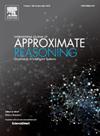具有双曲正切函数的前景实用程序
IF 3
3区 计算机科学
Q2 COMPUTER SCIENCE, ARTIFICIAL INTELLIGENCE
引用次数: 0
摘要
强化学习中的一个安全分支是通过在马尔可夫决策过程框架内整合风险敏感性。目标是减轻可能导致严重负面后果的低概率事件。消除这类风险事件通常是通过在预期收益上加入效用函数来完成的;因此,根据与不同结果相关的风险水平重塑奖励结构。可以用一个实用程序修改时间差分学习算法以捕获风险。值得注意的是,这些效用函数是凸的还是凹的,取决于期望的风险行为。在给定结果空间和风险敏感模式下,凹效用可能促进风险规避行为,凸效用可能鼓励风险寻求策略。这种函数结构在前景理论中得到了证明,这激发了一个新的公式,使用双曲正切函数PTanh。利用PTanh进行了实验,以评估边际递减特性对风险规避政策的影响。结果表明,边际与风险规避参数的选择之间存在相关性。边际效应影响规避政策的有效性。当考虑边际时,PTanh可以在平均奖励/禁止状态率的比率方面展示更好的结果。此外,利用经验证据,PTanh展示的政策实验推广到前景形状的其他效用。本文章由计算机程序翻译,如有差异,请以英文原文为准。
Prospect utility with hyperbolic tangent function
One branch of safety in reinforcement learning is through integrating risk sensitivity within the Markov Decision Process framework. The objective is to mitigate low-probability events that could lead to severe negative outcomes. Eliminating such risky events is usually done by incorporating a utility function on the expected return; therefore, reshaping the reward structures according to the risk levels associated with different outcomes. The temporal difference learning algorithm can be modified with a utility to capture risk. Notably, such utility functions are either convex or concave depending on the desired risk behavior. Given the outcome space and depending on the risk-sensitivity mode, concave utilities may promote risk-averse behavior and convex utilities may encourage risk-seeking strategies. Such function structure is demonstrated in Prospect Theory, and this motivates a novel formulation using the hyperbolic tangent function called PTanh. Using PTanh, experiments are performed to assess the effect of the diminishing marginal property on the risk-averse policies. It is concluded that there is a correlation between the marginal and selecting the risk-averse parameters. The marginals influence the effectiveness of the averse policies. When the marginals are considered, PTanh can demonstrate better results in terms of a ratio of average reward per prohibited state rate. Furthermore, using empirical evidence, the policy experiments shown with PTanh generalize to other utilities of the Prospect Shape.
求助全文
通过发布文献求助,成功后即可免费获取论文全文。
去求助
来源期刊

International Journal of Approximate Reasoning
工程技术-计算机:人工智能
CiteScore
6.90
自引率
12.80%
发文量
170
审稿时长
67 days
期刊介绍:
The International Journal of Approximate Reasoning is intended to serve as a forum for the treatment of imprecision and uncertainty in Artificial and Computational Intelligence, covering both the foundations of uncertainty theories, and the design of intelligent systems for scientific and engineering applications. It publishes high-quality research papers describing theoretical developments or innovative applications, as well as review articles on topics of general interest.
Relevant topics include, but are not limited to, probabilistic reasoning and Bayesian networks, imprecise probabilities, random sets, belief functions (Dempster-Shafer theory), possibility theory, fuzzy sets, rough sets, decision theory, non-additive measures and integrals, qualitative reasoning about uncertainty, comparative probability orderings, game-theoretic probability, default reasoning, nonstandard logics, argumentation systems, inconsistency tolerant reasoning, elicitation techniques, philosophical foundations and psychological models of uncertain reasoning.
Domains of application for uncertain reasoning systems include risk analysis and assessment, information retrieval and database design, information fusion, machine learning, data and web mining, computer vision, image and signal processing, intelligent data analysis, statistics, multi-agent systems, etc.
 求助内容:
求助内容: 应助结果提醒方式:
应助结果提醒方式:


